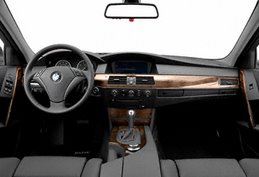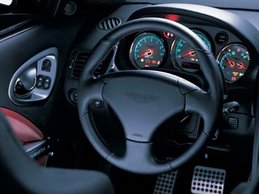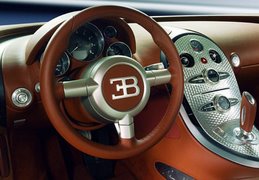 2008 BMW M3
2008 BMW M3 - In this group of radical cars, the M3 emerged quickly as the voice of reason. The extremist voices of the Porsche and the GT-R are just not present in the M3. It never shouts, utters complaints, or makes any unbecoming demands. Road and tire noise are subdued, the fabric-covered seats are perfect, and there is a back seat and a real trunk. But even with those attributes, the M3 doesn’t skimp on supercar performance. It just happens to be dressed in a polished and practical package.
As one test driver put it, “The M3 is the car that the driver has the most control over.” Oversteer, understeer, and neutrality are all on the M3’s résumé, but they’re dependent on the driver’s inputs. The chassis has no surprises, no snap reactions, no bad habits—even midcorner bumps are s

opped up without drama. Strong brakes have excellent initial bite and didn’t fade even after many, many laps. The BMW’s lap time lagged 1.5 seconds behind the 911 Turbo’s, but that translates to an average speed throughout the lap that was only 0.3 mph slower than the far more powerful Porsche. Thus the BMW, though suffocated by the thin air at 4200 feet, managed to make up most of the difference by cornering faster.
It is immediately obvious (especially at altitude) that the M3 isn’t as quick as its turbocharged competition, but 0 to 60 mph in 4.4 seconds is nothing to scoff at, either (other M3s we’ve tested have been slightly quicker). A naturally aspirated 4.0-liter V-8 can’t deliver the massive torque of the blown sixes, but the M3 delivers its 414 horsepower in a linear and consistent manner from idle to its 8300-rpm redline. No lurching, no drama, no sudden explosions of boost. And the sound the BMW V-8 makes is due a Grammy. It’s a V-8 note not often heard outside racetracks, while the Nissan and the Porsche both sound as though they could wear a Dyson label.
The M3 offers an unparalleled mix of hassle-free livability and performance at a price that undercuts those of the Nissan and the Porsche. For that, it wins in

our book. We say its performance deficit is made up by the near perfection and sophistication of the rest of the package. And before you think we’ve gone soft and are too old for a wildcat like the GT-R, know that the average age of the test drivers (and the voters of the comparison test) was 29.5 years. Moreover, we’re the only three C/D staffers who dream of having a Lotus Elise as a daily driver. Trust us, we can put up with a lot of crudeness—you should have heard our dinner conversations. But if you can have it all without the pain, who would vote against that? And until that Elise thing happens, the M3 is the car we’d take home forever.
 Lexus GS 350 - The 2008 GS 350 is a 4-door, 5-passenger luxury sedan, available in two trims, the Sedan and the AWD.
Lexus GS 350 - The 2008 GS 350 is a 4-door, 5-passenger luxury sedan, available in two trims, the Sedan and the AWD.















